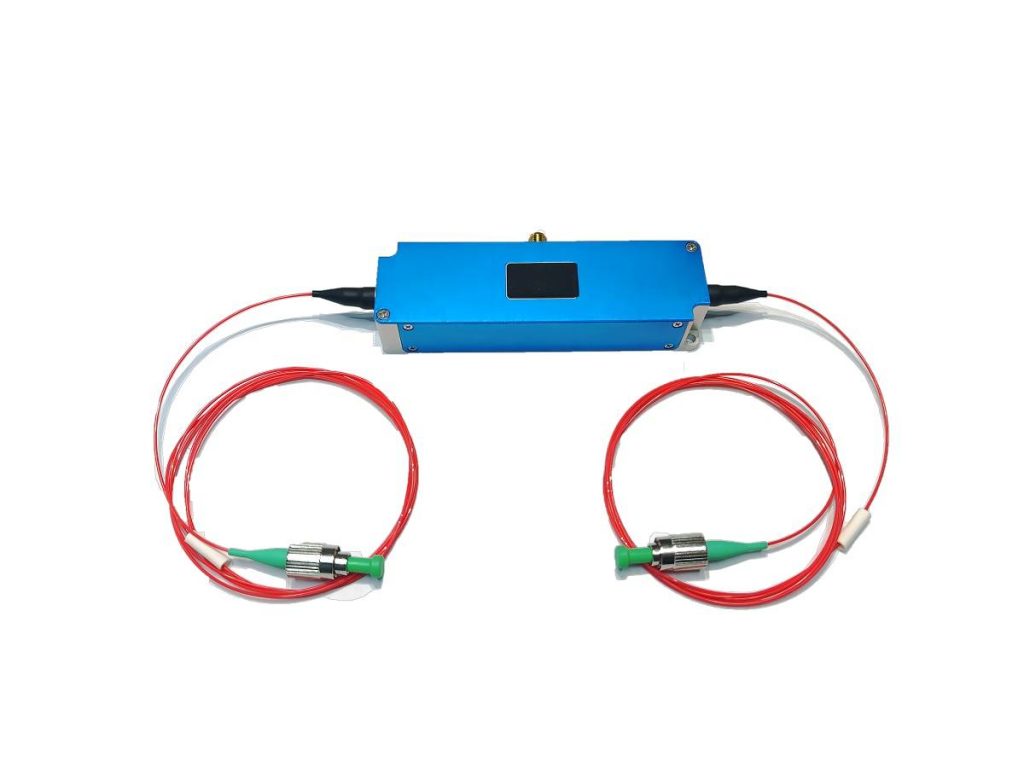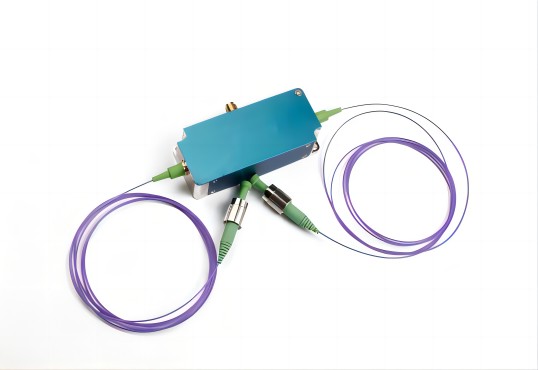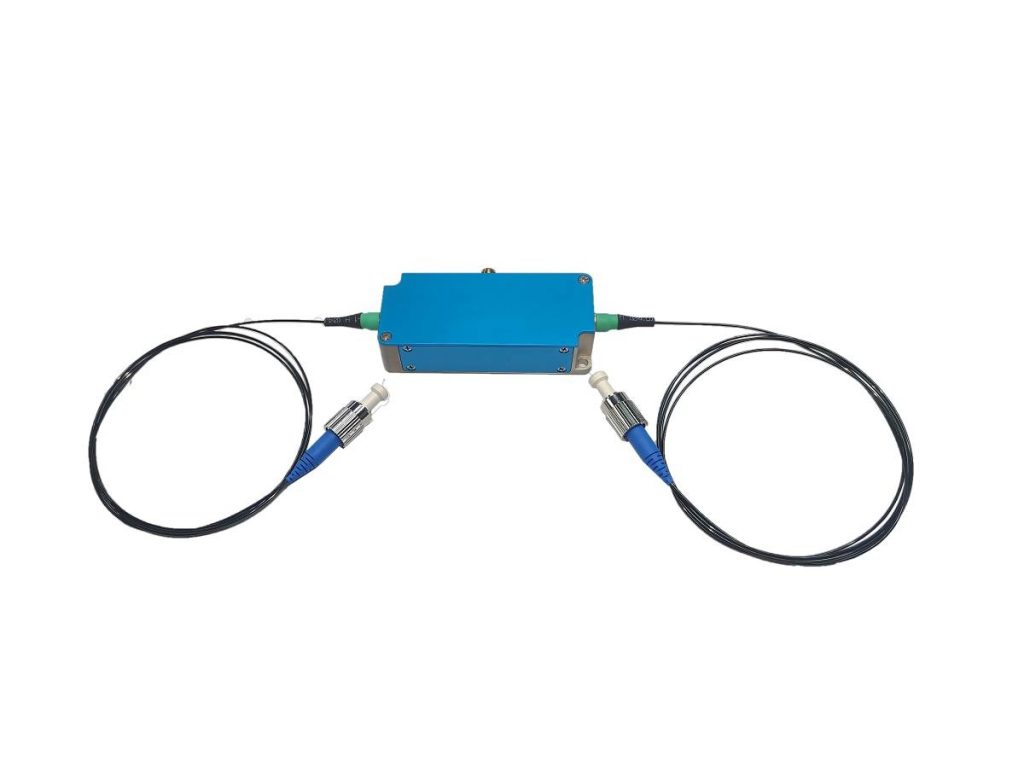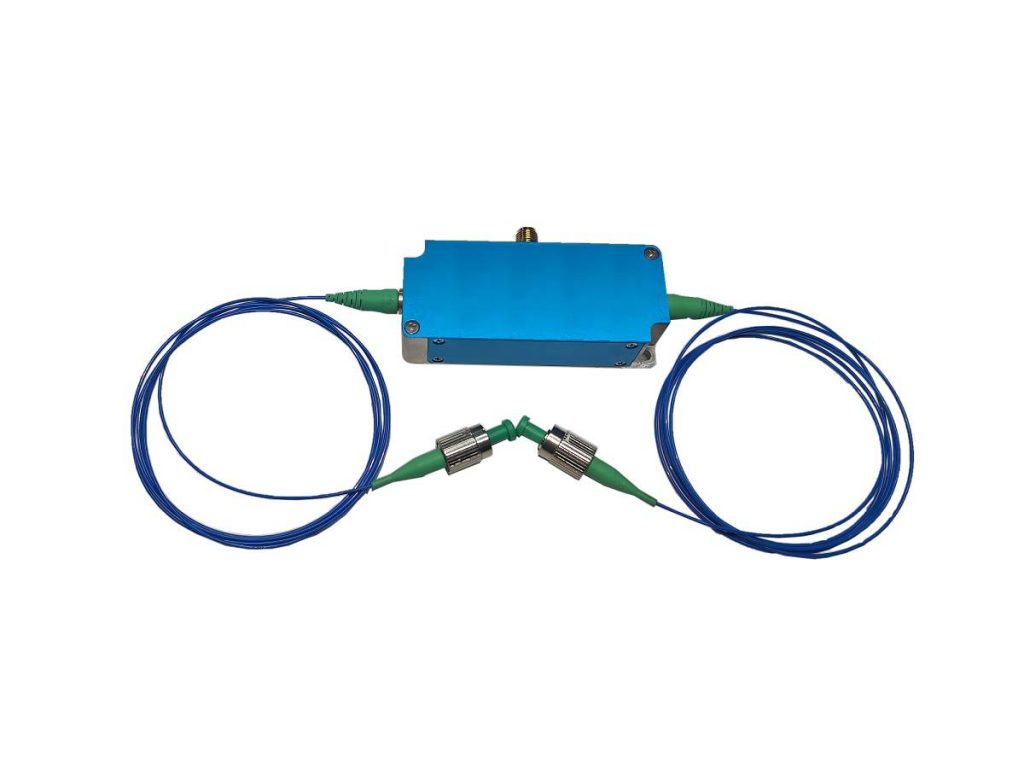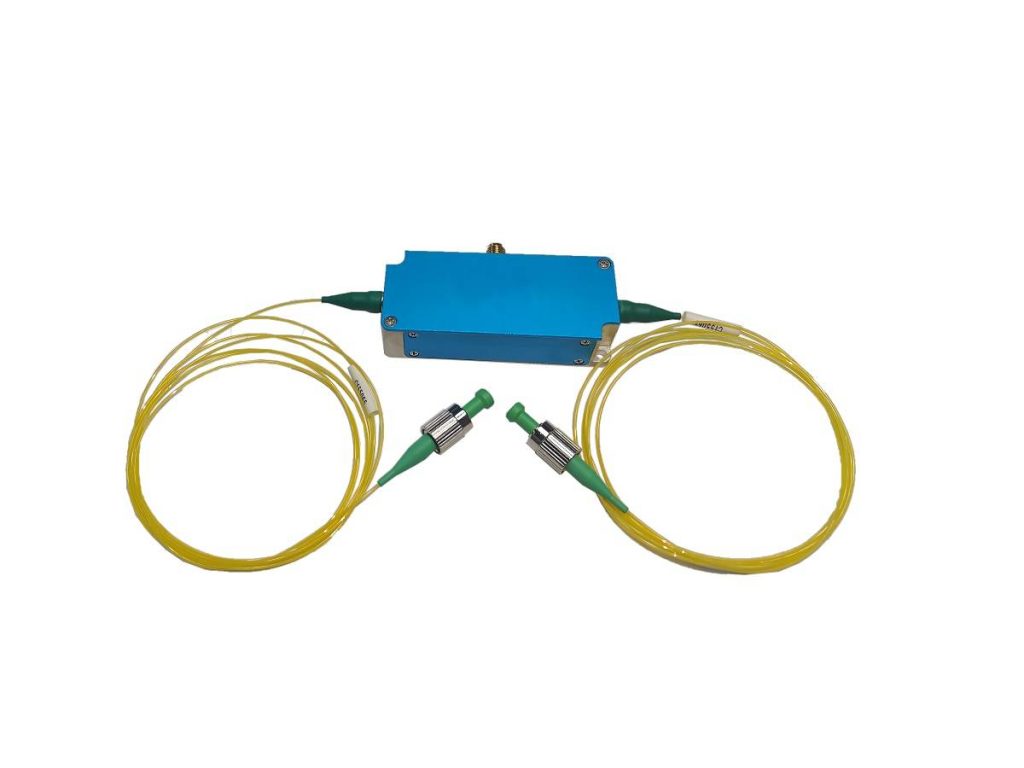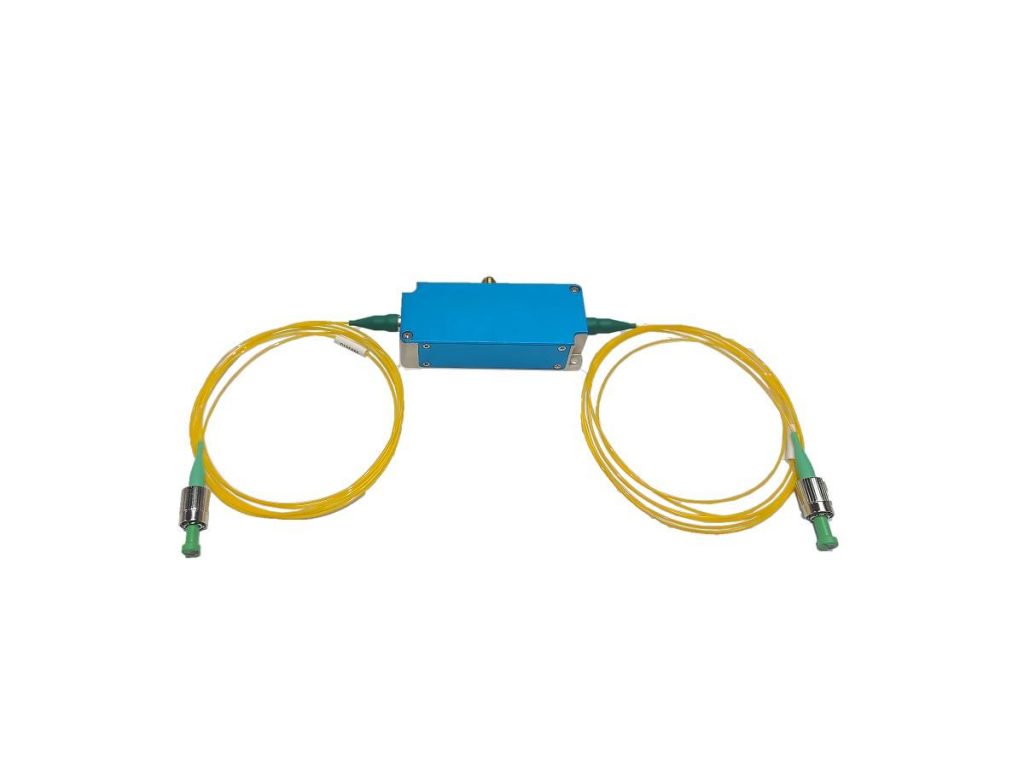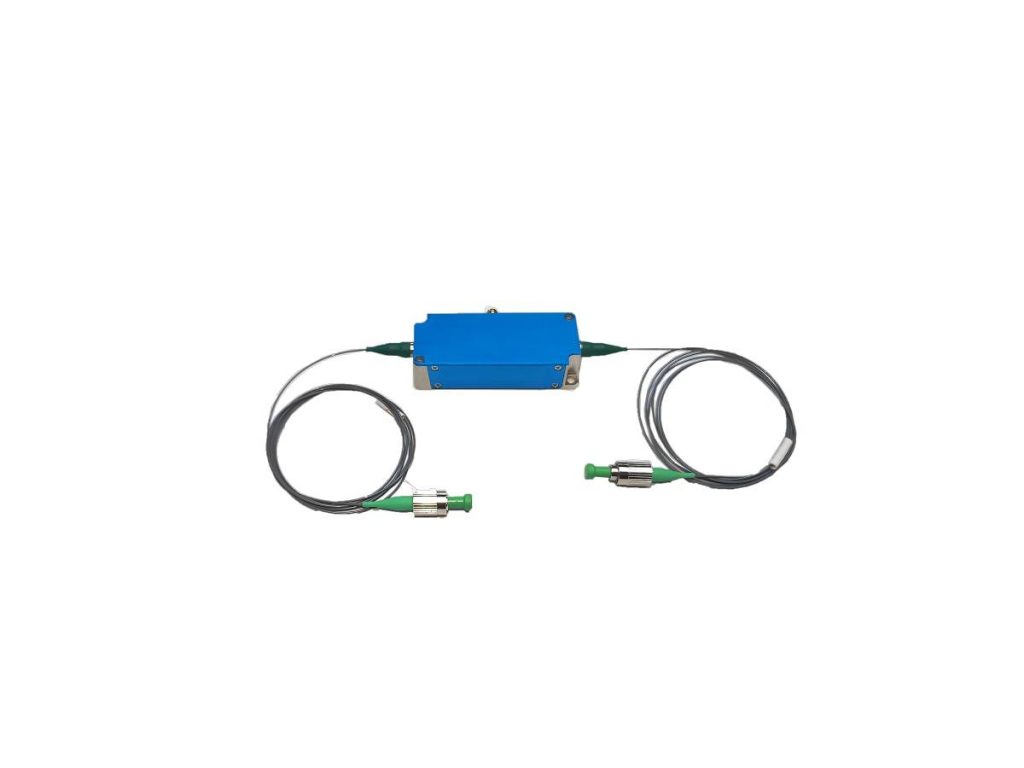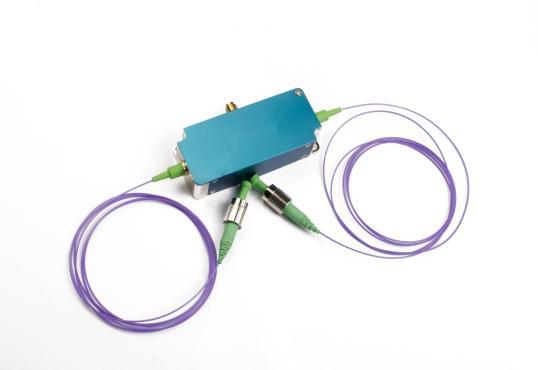The Role of Acousto Optic Modulators in Fiber Optical Communication Systems
Fiber optic communication systems have revolutionized the way we transmit information. Light pulses travel through hair-thin strands of glass or plastic, offering significant advantages over traditional copper cables. These advantages include immunity to electromagnetic interference, lower signal loss over long distances, and the ability to handle much larger data capacities. However, efficiently manipulating these light signals for data transmission requires specialized components. This is where acousto-optic modulators (AOMs) come into play.
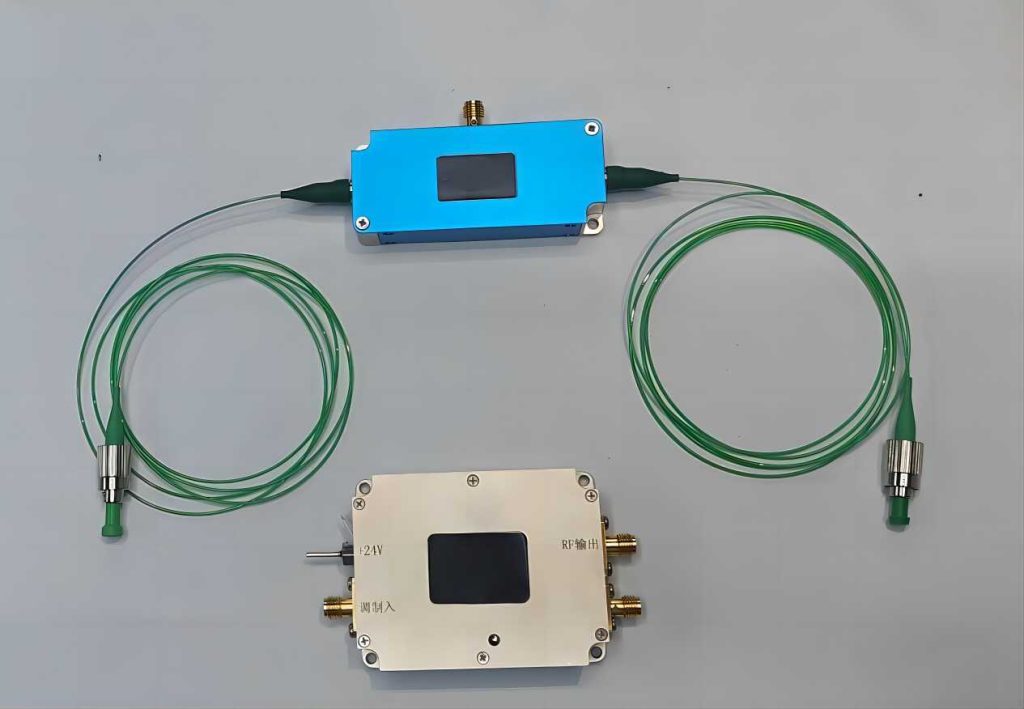
Working Principle of Acousto-Optic Modulators (AOMs)
Acousto-optic modulators (AOMs) function based on the well-established principle of acousto-optic effect. This effect describes the interaction between sound waves (acoustic waves) and light waves (optic waves) that alters the properties of light as it travels through a specific material. Here’s a detailed breakdown of the working principle:
- Core Components: An AOM consists of three key elements:
- Optical Medium: This is a precisely crafted crystal or glass element chosen for its specific optical properties, particularly its refractive index and its ability to efficiently interact with sound waves.
- Laser Beam: The light signal to be modulated is carried by a focused laser beam, typically in the infrared or near-infrared range. This beam is directed to propagate through the optical medium.
- Electrical Signal Source: An electrical signal generator provides the driving force for the modulation process. This signal is fed to a transducer bonded to the optical medium.
- Sound Wave Generation: The electrical signal from the source is applied to the transducer. This transducer acts as an electro-acoustic converter. It transforms the electrical signal into a traveling acoustic wave (sound wave) with a specific frequency and amplitude. This acoustic wave propagates through the optical medium.
- Refractive Index Modulation: As the acoustic wave travels through the optical medium, it causes a periodic variation in the material’s density. This variation in density directly affects the refractive index of the medium at different points. The refractive index is a measure of how much light bends as it passes through a material. Regions of higher density correspond to slightly higher refractive indices, while regions of lower density correspond to slightly lower refractive indices. Essentially, the acoustic wave creates a spatially modulated refractive index pattern within the optical medium.
- Light Diffraction: When the laser beam passes through the optical medium and encounters this spatially modulated refractive index pattern, it experiences diffraction. Diffraction is a well-known phenomenon where light bends slightly as it interacts with an object or a pattern with variations in its properties. In the case of the AOM, the varying refractive index acts like a dynamic diffraction grating. This grating diffracts the incoming laser beam, causing it to split into multiple outgoing beams.
- Modulation Control: The key aspect of AOMs lies in the ability to control the characteristics of the diffracted light beams. This control is achieved by manipulating the electrical signal driving the acoustic wave. By precisely adjusting the frequency, amplitude, or even the shape of the electrical signal, we can selectively control the intensity, phase, or direction of the outgoing light beam. This allows AOMs to perform various functions in fiber optic communication systems, such as high-speed switching, pulse shaping, and amplitude modulation.
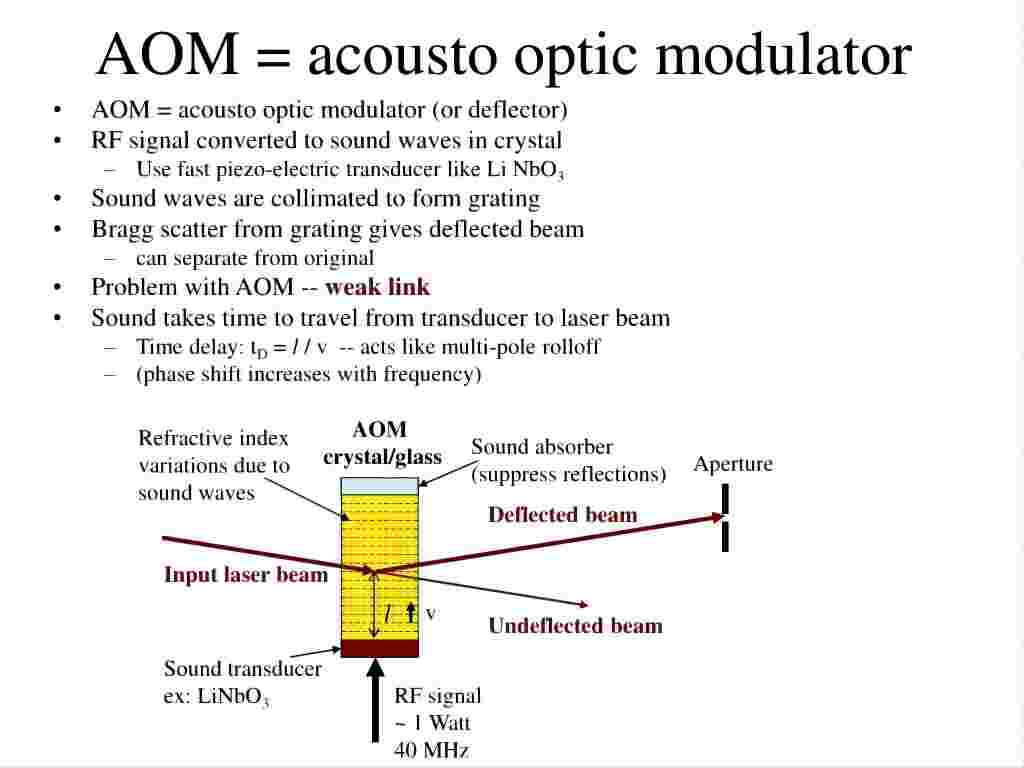
Applications of AOMs in Fiber Optics
AOMs offer a unique set of capabilities that make them valuable components in fiber optic communication systems. Here are some of their key applications:
- High-Speed Switching: One of the most crucial functionalities of AOMs is their ability to act as high-speed optical switches. By carefully controlling the electrical signal, the AOM can rapidly turn the laser beam on or off. This allows for efficient routing of data signals within the fiber optic network. Imagine a network with multiple data streams flowing through a single fiber. AOMs can be strategically placed to direct specific data streams to different paths within the network, enabling efficient and high-speed data transmission.
- Pulse Shaping: In modern fiber optic communication systems, information is encoded onto the light pulses themselves. The shape and duration of these pulses become crucial for accurate data transmission. AOMs excel at manipulating the shape and duration of light pulses. By precisely controlling the timing and intensity of the acoustic wave within the crystal, AOMs can tailor the light pulses to specific requirements. This ensures optimal data transmission for different communication protocols.
- Amplitude Modulation: AOMs can also modulate the intensity of the light signal. This is achieved by varying the amplitude (strength) of the acoustic wave generated within the crystal. A stronger acoustic wave creates a more significant variation in the refractive index, leading to a higher degree of diffraction and a weaker transmitted light beam. Conversely, a weaker acoustic wave results in a less pronounced intensity modulation of the transmitted light. By controlling the intensity of the light signal, AOMs can be used for amplitude modulation of the light carrier wave, a technique for encoding information onto the light signal itself.
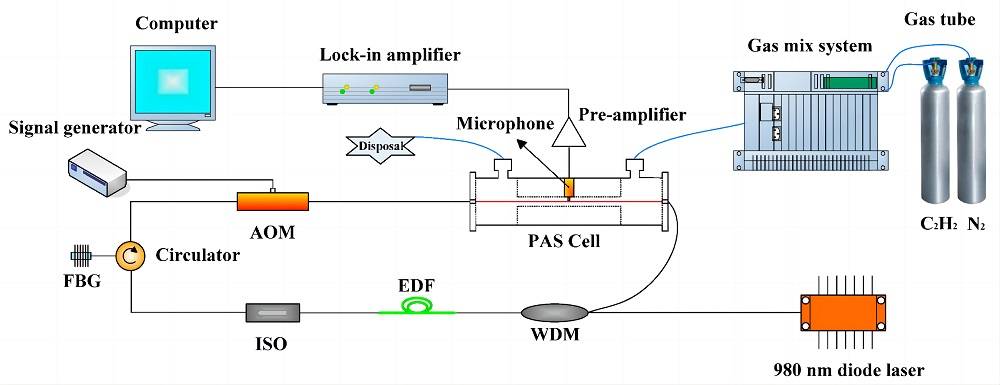
Advantages of AOMs in Fiber Optical Communication Systems
AOMs offer several advantages that make them well-suited for fiber optic communication systems:
- Fast Modulation Speeds: AOMs are capable of incredibly fast modulation speeds, reaching up to hundreds of MHz. This translates to their ability to handle high-bandwidth communication signals efficiently. In today’s world of ever-increasing data demands, AOMs play a vital role in ensuring the smooth transmission of large data packets.
- Wavelength Agnostic: Unlike some other modulation techniques, AOMs function effectively across a wide range of wavelengths. This characteristic makes them highly versatile and adaptable to various fiber optic applications. Regardless of the specific wavelength of the light source used in the communication system, AOMs can effectively manipulate the light signals.
- Low Power Consumption: Compared to some alternative modulation techniques, AOMs require relatively low electrical power to operate. This is a significant advantage, especially for applications where power efficiency is a critical concern. For instance, in situations where fiber optic cables span long distances, minimizing power consumption throughout the network becomes crucial. AOMs contribute to a more energy-efficient communication system by requiring less power for modulation compared to other options.
- Simple Design: The basic design of an AOM is relatively straightforward, consisting of a crystal element, a transducer, and driving electronics. This simplicity translates to several benefits. First, it allows for a more compact design compared to some other modulators. This compactness is advantageous for applications where space constraints exist. Second, the simpler design generally translates to lower manufacturing costs and potentially higher reliability due to fewer components involved.
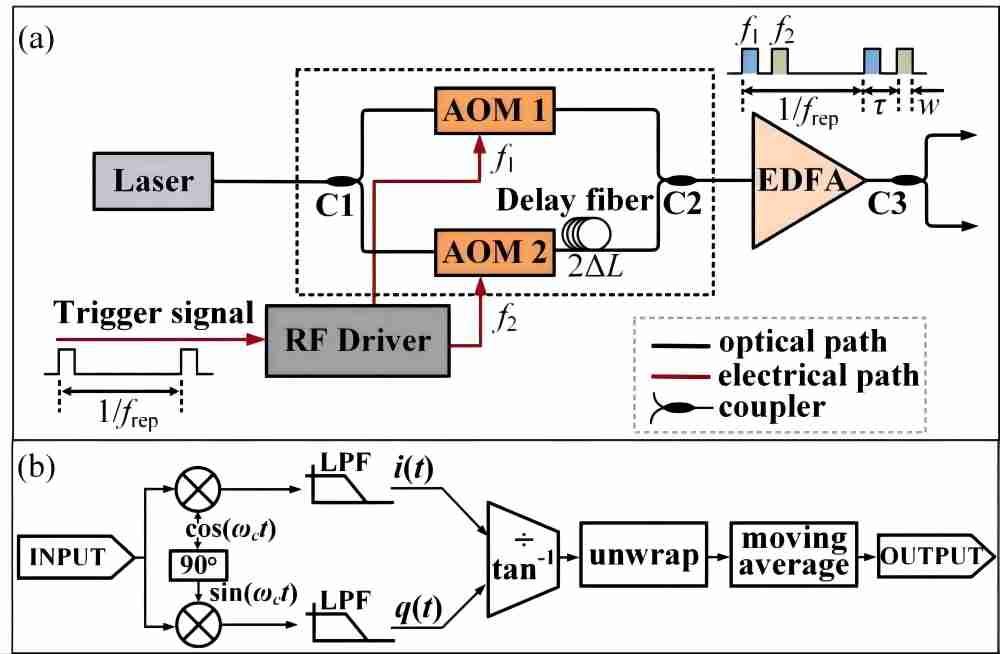
Conclusion
Acousto-optic modulators (AOMs) are versatile and crucial components in fiber optic communication systems. Their ability to manipulate light signals with high speed, across a wide range of wavelengths, and with relatively low power consumption makes them invaluable for various applications. From high-speed switching and pulse shaping to amplitude modulation, AOMs play a vital role in ensuring the efficient and reliable transmission of data over fiber optic links. As the field of fiber optics continues to evolve, AOMs are expected to remain at the forefront, enabling the development of even more advanced communication technologies.

